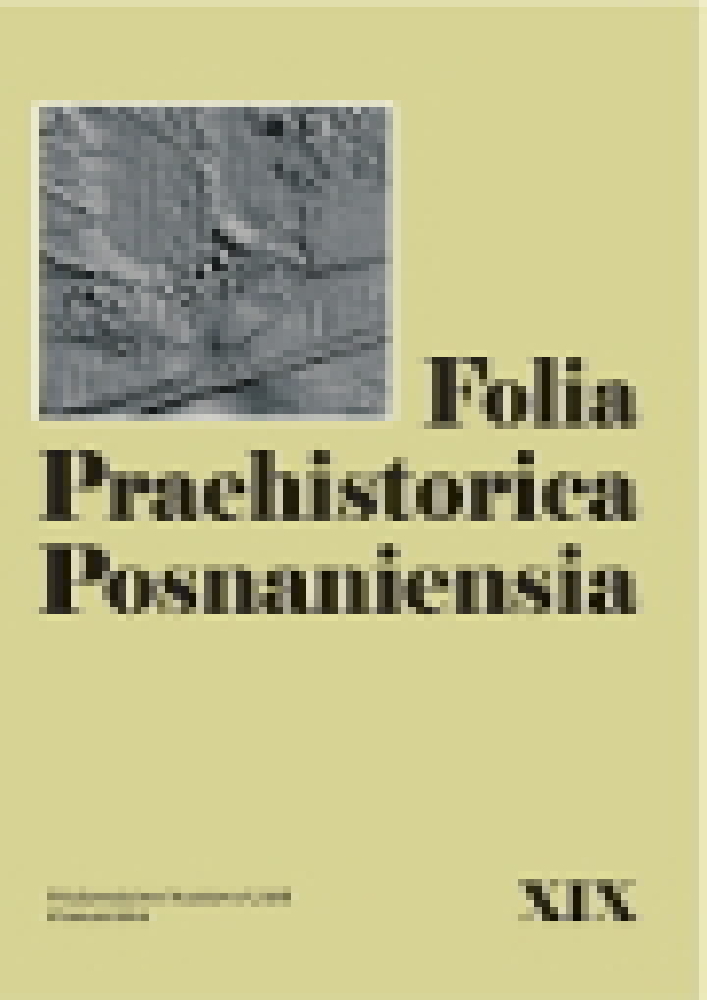Abstrakt
This paper is an attempt to compare selected software options for processing of LiDAR data. It is focused on filtration and classification of the ground points for the purpose of archaeological sites identification. We confronted popular commercial Terrasolid software with LAStools released under the LGPL license. To accomplish this task we used data gathered in the frame of ISOK project (Computerized Information System of Country Protection from Extraordinary Hazards), implemented in Poland several years ago. In order to examine the effectiveness of the software algorithms we selected well-known archeological sites of various landforms (barrows, megaliths, hill forts) to perform the test. Obtained results were compared with the classification provided within the source data of the ISOK project. It allowed us to indicate the advantages and disadvantages of each tested solutions.
Bibliografia
Axellson P. 2000 DEM generation from laser scanner data using adaptive TIN models, International Archives of Photogrametry and Remote Sensing 33/B4, s. 110–117. http://www.isprs.org/proceedings/XXXIII/congress/part4/111_XXXIII-part4.pdf
Bewley R.H., Crutchley S.P., Shell C.A., 2005 New light on an ancient landscape: lidar survey in the Stonehenge World Heritage Site, Antiquity 79, s. 636–647.
Challis K., Kokalj Z., Kincey M., Moscrop D., Howard A.J., 2008 Airborne lidar and historic environment records, Antquity 82, s. 1055–1064.
Challis K., Howard A.J., 2013 The role of lidar intensity data in interpreting environmental and cultural archaeological landscapes [w:] Interpreting archaeological topography, airborne laser scanning, 3D data and ground observation, red. R.S. Opitz, D.C. Cowley, Oxford, s. 161–170.
Chandra S., Zhang Z., Liu X. 2008 Large Area DEM Generation Using Airborne LiDAR Data and Quality Control [w:] Proceedings of the 8th International Symposium on Spatial Accuracy Assessment in Natural Resources and Environmental Sciences, red. J. Zhang, M.F. Goodchild, Shanghai, s. 79–85. http://eprints.usq.edu.au/4833/1/Liu_Zhang_Peterson_Chandra_PV.pdf
Cowley D.C., Opitz R.S. 2013 Interpreting archaeological topography: lasers, 3D data, observations, visualization and applications [w:] Interpreting archaeological topography, airborne laser scanning, 3D data and ground observation, red. R.S. Opitz, D.C. Cowley, Oxford, s. 1–12.
Crutchley S., Crow P. 2009 The Light Fantastic: Using airborne laser scanning in archaeological survey, English Heritage, Swindon. http://www.english-heritage.org.uk/publications/light-fantastic/light-fantastic.pdf
Crutchley S. 2013 Using lidar data – drawing on 10 year’s experience at English Heritage [w:] Interpreting archaeological topography, airborne laser scanning, 3D data and ground observation, red. R.S. Opitz, D.C. Cowley, Oxford, s. 136–145.
Devereux B.J., Amable G.S., Crow P., Cliff A.D. 2005 The potential of airborne lidar for detection of archaeological features under woodland canopies, Antiquity 79, s. 648–660.
Devereux B.J., Amable G.S., Crow P. 2008 Visualisation of LiDAR terrain models for archaeological feature detection, Antiquity 82, s. 470–479.
Doneus M., Briese C. 2011 Airborne Laser Scanning in forested areas – potential and limitations of an archaeological prospection technique [w:] Remote Sensing for Archaeological Heritage Management. Proceedings of the 11th EAC Heritage Management Symposium, Reykjavik, Iceland, 25–27.03. 2010, red. D.C. Cowley, Budapest, s. 59–76.
Doneus M., Kühteiber T. 2013 Airborne laser scanning and archaeological interpretation – bringing back the people [w:] Interpreting archaeological topography, airborne laser scanning, 3D data and ground observation, red. R.S. Opitz, D.C. Cowley, Oxford, s. 32–50.
Florinsky I.V. 2002 Errors of signal processing in digital terrain modeling, International Journal of Geographical Information Science 16, s. 475–501. http://iflorinsky.narod.ru/Florinsky-2002a.pdf
Hesse R. 2010 LiDAR-derived Local Relief Models – a new tool for archaeological prospection, Archaeological Prospection 17, s. 67–72.
Hug C., Krzystek P., Fuchs W. 2004 Advanced LiDAR data processing with LAStools, International Archives of Photogrammetry and Remote Sensing 35, s. 832–837. http://www.isprs.org/proceedings/XXXV/congress/comm2/papers/240.pdf
Isenburg M. 2011 LAStools: converting, filtering, viewing, gridding, and compressing LiDAR data. http://www.cs.unc.edu/~isenburg/lastools.
Korzeniowska K., Łącka M. 2011 Generating DEM from LiDAR data – comparison of available software tools, Archiwum Fotogrametrii, Kartografii i Teledetekcji 22, s. 271–284.
Kraus K., Pfeifer N. 2001 Advanced DTM generation from LiDAR data, International Archives of Photogrammetry, Remote Sensing and Spatial Information Sciences 34, s. 23–30. http://www.ipf.tuwien.ac.at/publications/np_annapolis_2001.pdf
Krištof O., Zakšek K., Kokalj Ž. 2013 Visualizations of lidar derived relief models [w:] Interpreting archaeological topography, airborne laser scanning, 3D data and ground observation, red. R.S. Opitz, D.C. Cowley, Oxford, s. 100–114.
Królikowski J. 2012 ISOK od kuchni, Geodeta 7, s. 19–22.
Marszalik M. 2009 Modelowanie stref zagrożenia powodziowego z wykorzystaniem Numerycznego Modelu Terenu z lotniczego skaningu laserowego, Kraków [maszynopis pracy dyplomowej, AGH]. http://twiki.fotogrametria.agh.edu.pl/pub/PraceMagisterskie/WebHome/dyplomowa_Marszalik.pdf
Opitz R.S. 2013 An overview of airborne and terrestrial laser scanning in archaeology [w:] Interpreting archaeological topography, airborne laser scanning, 3D data and ground observation, red. R.S. Opitz, D.C. Cowley, Oxford, s. 13–31.
Pietrzak J. 2012 Filtracja danych z lotniczego skaningu laserowego dla potrzeb NMT na przykładzie wybranych programów, Kraków [maszynopis pracy dyplomowej, AGH].
Risbøl O. 2013 Cultivating the ‘wileress’ – how lidar can improve archaeological landscape understanding [w:] Interpreting archaeological topography, airborne laser scanning, 3D data and ground observation, red. R.S. Opitz, D.C. Cowley, Oxford, s. 51–62.
Sławik Ł., Zapłata R. 2011 LiDAR w archeologii – zagadnienia wprowadzające [w:] Digitalizacja dziedzictwa archeologicznego, wybrane zagadnienia, red. R. Zapłata, s. 207–232.
Soininen A. 2011a TerraScan User’s Guide. http://www.terrasolid.fi/en/users_guide
Soininen A. 2011b TerraModeler User’s Guide. http://www.terrasolid.fi/en/users_guide
Szadkowski A. 2012 ISOK – co znajdziemy w zasobie?, Geodeta 7, s. 14–18.
Twardowski M., Marmol U. 2012 Wizualizacja i przetwarzanie chmury punktów lotniczego skaningu laserowego, Archiwum Fotogrametrii, Kartografii i Teledetekcji 23, s. 457–466.
Wężyk P. 2006 Wprowadzenie do technologii skaningu laserowego w leśnictwie, Roczniki Geomatyki 4/4, s. 119–132.
Wierzbicki J. 2005 Grobowiec megalityczny z Borkowa, stan. 1, gm. Malechowo, woj. zachodniopomorskie. Jedyny grób korytarzowy na ziemiach polskich? [w:] Historia i kultura Ziemi Sławieńskiej, Gmina Malechowo, t. 5, red. W. Rączkowski, J. Sroka, Sławno, s. 93–112.
Zakšek K., Kokalj Ž., Oštir K. 2011 Application of sky-view factor for the visualization of historic landscape features in lidar-derived relief models, Antiquity 85, s. 263–273.
Źródła internetowe
http://www.codgik.gov.pl/zasob/372-numeryczne-dane-wysokosciowe.html
